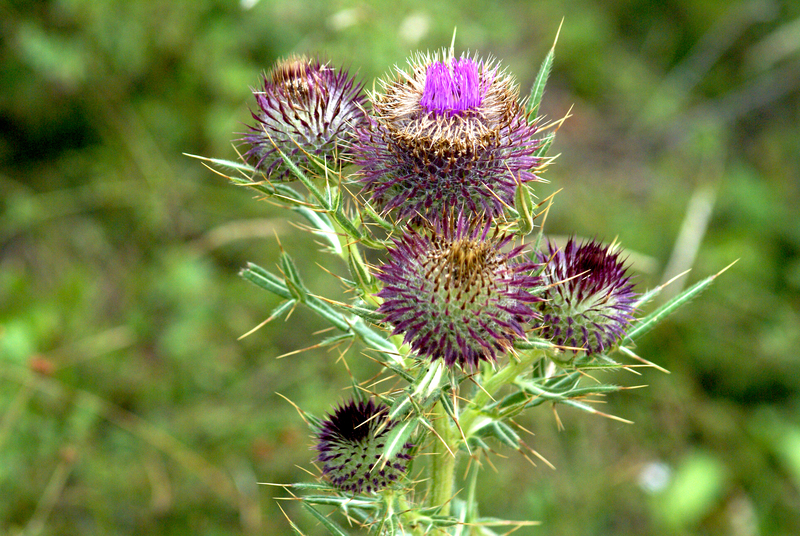3 Must-Know Tips for Effective Weed Management
Posted on 30/08/2025
3 Must-Know Tips for Effective Weed Management
Weeds are more than just unsightly patches of green invading your garden, lawn, or farmland--they are competitive, resilient, and can drastically reduce the health, yield, and vitality of your chosen plants. Developing effective weed management strategies is essential for any grower or gardener looking to maintain optimal plant health and maximize productivity. In this comprehensive guide, we will explore three crucial weed management strategies you can implement today. Whether you're a homeowner, a commercial farmer, or an avid gardener, these practical weed control tips will help you achieve long-term success.

Why Is Weed Management Important?
Weeds compete with your desired vegetation for water, nutrients, sunlight, and space. Left unmanaged, they can overtake gardens, decrease crop yields, promote pests and diseases, and even lead to environmental issues. Implementing robust weed control methods is not only about aesthetics but also supports healthier, more productive landscapes.
- Increased crop yields - Fewer weeds mean your crops or ornamental plants get the nutrients and light they need.
- Enhanced soil health - Certain weeds can harbor pathogens or attract pests.
- Reduced chemical usage - Preventing weeds can minimize your need for herbicides.
- Improved ecosystem balance - Native plants thrive better when invasive weeds are managed.
Let's now delve into the top three must-know weed management tips that can transform your approach and bring about lasting results.
Tip 1: Adopt an Integrated Weed Management Approach
The most effective weed management strategy is not a single technique, but an integrated, multi-pronged approach known as Integrated Weed Management (IWM). This involves combining various cultural, mechanical, biological, and chemical methods to control weeds sustainably.
Key Components of Integrated Weed Management
- Cultural Control: This includes crop rotation, using cover crops, optimizing planting dates, and selecting competitive crop varieties. By adjusting your cultural practices, you encourage healthy plant growth that naturally suppresses weeds.
- Mechanical and Physical Control: Regular hand-weeding, hoeing, mowing, and tilling physically remove or damage weeds. Mulching--a key physical barrier--also blocks sunlight, preventing weed germination.
- Biological Control: This involves using living organisms such as insects, fungi, or grazing animals that specifically target weeds. While this method is more common in large-scale agriculture, it can be highly effective for certain stubborn weed species.
- Chemical Control: Responsible use of herbicides remains an important tool, particularly for tough or invasive weeds where other methods fall short. Always follow label instructions and practice site-specific, targeted applications to avoid resistance and harm to non-target plants.
IWM stands out because it reduces the risk of developing herbicide resistance, preserves soil health, and creates a more resilient ecosystem. Instead of relying solely on one method, integrating several aligns with sustainable and long-term weed prevention.
Pro tip:
Rotate your weed control methods regularly. Weeds can adapt quickly to a single strategy, so by mixing up your approach, you keep them off-balance and less likely to thrive.
Tip 2: Prevent Weed Spread and Seed Bank Accumulation
The old adage "an ounce of prevention is worth a pound of cure" rings especially true for weed prevention techniques. The primary route through which weeds invade new areas is by seed dispersal, and a single mature weed can release thousands of seeds into your soil's "seed bank," lying dormant for years and sprouting when conditions are right.
How to Minimize Weed Seed Spread
- Prevent weeds from going to seed: Regularly scout your property and remove weeds before they flower and set seed. This significantly reduces future outbreaks.
- Mulch, mulch, mulch: Applying organic or synthetic mulch acts as a physical barrier, blocking light and making it difficult for weed seeds to germinate and establish. In gardens, a 2-3 inch layer is usually sufficient.
- Clean equipment and footwear: Seeds easily hitchhike on mowers, tillers, vehicles, and shoes. Clean your tools after working in infested areas, especially when moving from one site to another.
- Compost wisely: Make sure any composted material reaching your soil is fully decomposed and free of weed seeds. High composting temperatures kill weed seeds, but unfinished compost can spread them further.
- Install barriers: Use landscape fabric, plastic edging, or deep root barriers to block encroaching weeds from neighboring properties.
- Fill bare spots quickly: Open soil is an invitation for weeds. After removing a plant or harvesting crops, sow cover crops, grasses, or desired ground covers immediately.
By focusing on prevention and prompt removal, you limit the establishment of weeds and dramatically reduce the workload required for future management.
Weed Seed Bank Explained
The "weed seed bank" refers to the reservoir of viable weed seeds present in your soil. Seeds can remain dormant for extended periods, sometimes even decades. The fewer seeds you allow to enter the seed bank, the easier long-term weed control becomes. Cultivating a clean, weed-free environment year-round ensures your soil won't become a source of recurring weed outbreaks.
Tip 3: Implement Targeted and Timely Weed Control Actions
Weed management is most successful when interventions are strategic and precisely timed. Targeted weed control means focusing your efforts when and where they will have the biggest impact, rather than scattering resources or reacting too late.
Timing Is Everything
- Act while weeds are young: Younger weeds are easier to control, have a weaker root system, and are less likely to have set seeds. Regular early-season walks through your garden or field to identify and eliminate weeds pays huge dividends.
- Apply herbicides at the right stage: If chemical weed killers are necessary, use them when weeds are actively growing, usually in the seedling or early vegetative stages, for maximum efficacy.
- Choose calm, dry days: For both mechanical and chemical interventions, still, dry days prevent the spread of seeds (mechanical) or drift of herbicides (chemical) onto desired plants.
Precision and Selectivity Matter
- Spot-treat problem areas: Instead of blanket-spraying herbicides across your whole lawn or field, only treat patches where weeds are present. This reduces chemical use and environmental impact.
- Hand-pull or dig deep-rooted weeds: Some perennial weeds such as dandelion or bindweed need to be dug out fully, as leaving any fragment can result in regrowth.
- Use selective herbicides where appropriate: Certain products target broadleaf weeds while leaving grasses unharmed. Match the product to the problem for best results.
- Recognize weed species: Learn to identify the most common and invasive weeds in your area. This lets you tailor your control methods and prioritize efforts on the most problematic species.
Regular monitoring is the backbone of this approach. Set aside time every week to check for new weed growth and act promptly. This keeps populations low and prevents weeds from establishing deep roots or going to seed.
Bonus: Sustainable and Eco-Friendly Weed Management Practices
Modern sustainable weed management emphasizes not only effectiveness, but also environmental stewardship and safety. Consider these extra strategies as you refine your approach:
- Use organic mulches such as shredded leaves, wood chips, or straw to naturally suppress weeds and enrich your soil.
- Solarization: Covering moist soil with clear plastic during peak summer can heat the soil and kill weed seeds and seedlings.
- Encourage dense planting: High-density planting shades the soil and leaves less room and light for weeds to take hold.
- Maintain sharp tools: Sharp hoes and mowers are faster and more effective at damaging or removing weeds.
- Promote biodiversity: Diverse plantings can outcompete weeds and create habitats for beneficial insects and birds.
Eco-Friendly Alternatives to Chemical Herbicides
If you want to avoid or minimize synthetic weed killers, try these natural solutions:
- Boiling water or vinegar sprays for spot treatment (effective on patios and walkways).
- Flame weeding (passing a flame over weeds) for paths and driveways--caution is required to avoid fire risks.
- Manual removal using ergonomic weed pullers and long-handled hoes.
Common Mistakes to Avoid in Weed Management
To round out your skills, here are some typical errors many gardeners and land managers make, and how to avoid them:
- Ignoring small weeds: Letting minor infestations slide quickly becomes a major problem.
- Over-tilling: Excessive tilling can expose dormant weed seeds and actually increase infestations.
- Misusing herbicides: Applying at the wrong stage or under poor weather conditions can reduce efficacy and harm your plants or local ecosystem.
- Neglecting monitoring: Infrequent inspections can allow weeds to set seed and multiply rapidly.
- Failing to replenish mulch or barriers: Over time, mulches break down and physical barriers shift--keep them maintained for continued protection.

Conclusion: Take Charge of Your Weed Management Today
In summary, the three must-know tips for effective weed management are: cultivating an integrated management approach, preventing weed seed spread and seed bank buildup, and timing your interventions for maximum impact. Adopting these proven practices can yield healthier, more productive landscapes and save you countless hours of future labor.
Ready to reclaim your space from weeds? Start by assessing your current strategy, identifying weak points, and implementing these practical tips. With knowledge, consistency, and the right techniques, you can achieve lasting weed control and enjoy a more robust, beautiful, and sustainable garden or farm.
Frequently Asked Questions (FAQs) About Weed Management
- What is the most effective method of weed management?
Integrated approaches that combine cultural, mechanical, chemical, and biological methods offer the most sustainable results. - How often should I check for weeds?
Weekly inspections are recommended during peak growing seasons to stay ahead of weed growth. Early detection is key for effective action. - Are organic weed control methods effective?
Yes! Mulching, dense planting, hand-pulling, and flame weeding can all be very effective, especially for gardeners looking to avoid herbicides. - Can I get rid of weeds permanently?
While total eradication is rare, consistent, and proactive management can keep weeds at a very low and manageable level.
For more in-depth guides on weed control, landscaping, and sustainable gardening, explore our other articles and keep your green spaces thriving, weed-free, and beautiful year-round.



